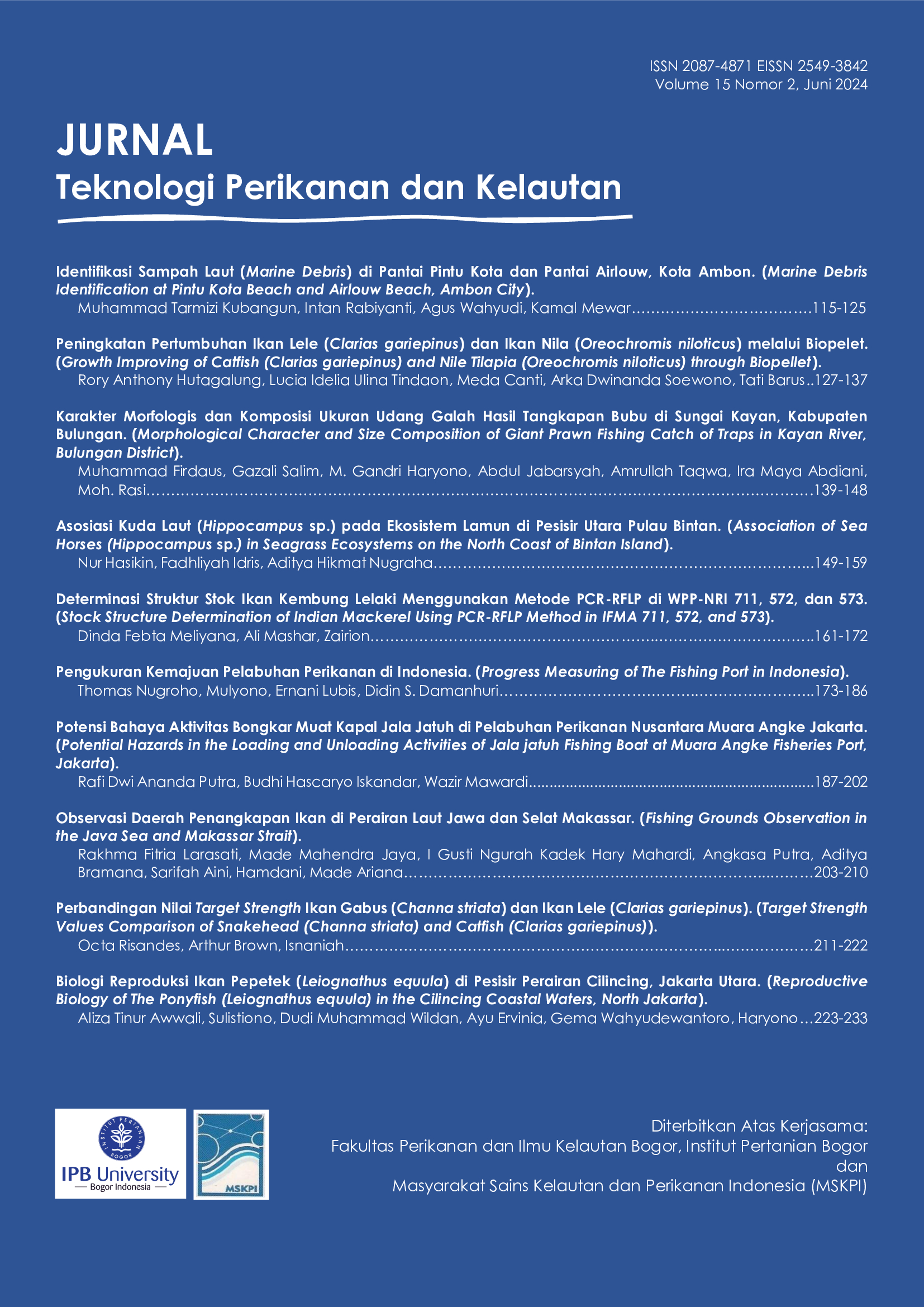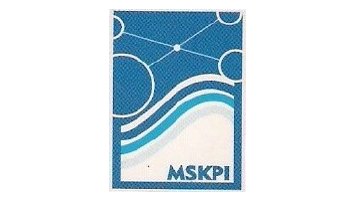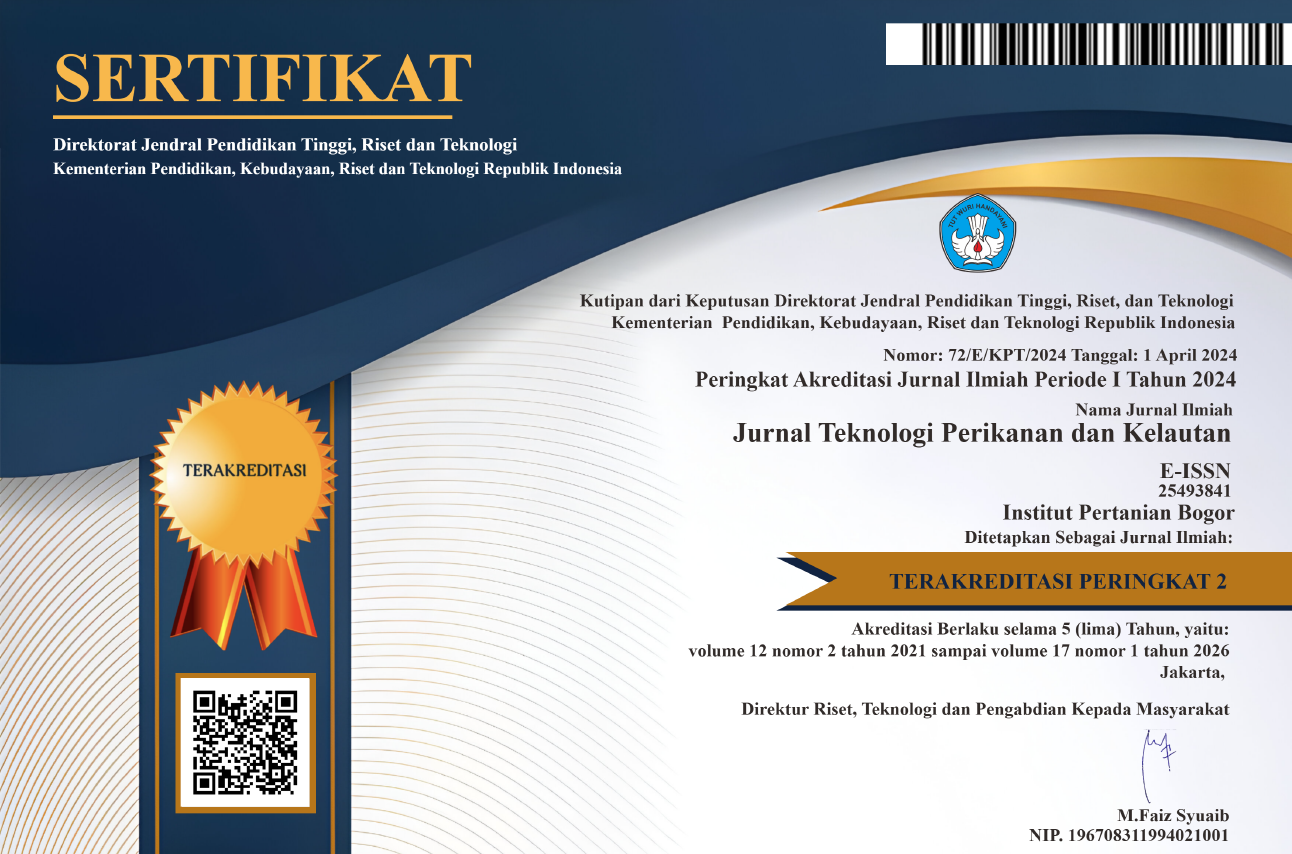IDENTIFIKASI SAMPAH LAUT (MARINE DEBRIS) DI PANTAI PINTU KOTA DAN PANTAI AIRLOUW, KOTA AMBON
DOI:
https://doi.org/10.24319/jtpk.15.115-125Keywords:
Ambon City, identification, marine debrisAbstract
Marine debris consists of solid organic and inorganic materials that do not easily decompose, accumulate, scattering across the sea and beaches. The waste problem remains a fundamental problem that has yet to be resolved in various parts of the world, including Ambon City. The data collection techniques were direct observation and waste sampling. Determination of the research location was adjusted to the tidal schedule in August 2023 at Pintu Kota Beach and Airlouw Beach, Ambon City. Results of the study showed that the types of waste obtained were plastic bottles, plastic cups, plastic pieces, plastic packaging, coconut fiber, dry leaves, logs, iron cans, iron scrap, sandals, pampers, cloth, styrofoam, sponges, paper, and others. The results of measuring rubbish at Pintu Kota Beach and Airlouw Beach fall into the mega-debris (>1 m) and macro-debris (>2.5 cm - <1 m) categories, but most of it is in the macro-debris category (>2.5 cm - <1 m), namely 2 cm - 1.74 m. The mass of waste with a high average yield was observed at Pintu Kota Beach, ranged from 100 g at low tide to 121 g at high tide. Meanwhile, the average mass of waste at Airlouw Beach was relatively low at 58 g at high tide and 61 g at low tide. Plastic waste and non-plastic waste were more commonly found during high flood tide. This is possibly due to high rainfall in the east monsoon in Ambon City, which causes currents and waves to carry garbage up to the coast.
Downloads
Downloads
Published
Issue
Section
License
This journal is published under the terms of the Creative Commons Attribution-NonCommercial 4.0 International License. Authors who publish with this journal agree to the following terms: Authors retain copyright and grant the journal right of first publication with the work simultaneously licensed under a Creative Commons Attribution-NonCommercial 4.0 International License. Attribution — You must give appropriate credit, provide a link to the license, and indicate if changes were made. You may do so in any reasonable manner, but not in any way that suggests the licensor endorses you or your use. NonCommercial — You may not use the material for commercial purposes.






















